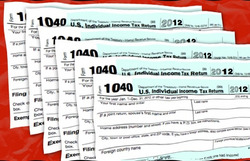The final countdown to April 15 has begun! Anyone who has waited this long to file their tax return might be in for a shock: finding out that someone else has already filed in their name and claimed their refund. This scam is called tax identity fraud. All it takes is knowing an individual’s social security number and a few other pieces of personal information to pull it off.
The good news is, the IRS has begun taking measures to verify taxpayer identities and guard against bogus returns. The bad news is, these aren't foolproof. Tax identity fraud still rakes in hundreds of millions of dollars every year. And there are already signs that as the IRS moves to stop them, crooks are shifting tactics. For instance, they’re conning taxpayers by masquerading as IRS agents and making threatening phone calls, or targeting state income tax returns.
Lysa Myers, ESET security researcher, offers these tips for preventing tax identity fraud:
- Safeguard your Social Security number. Your SSN is the key to tax fraud. Don’t use it as an account identifier or disclose it for anything other than income tax purposes, Medicare or Medicaid. For any other use, ask for an alternate account identifier instead.
- Order your IRS transcript. The transcript reveals the record of tax payments and refunds the IRS has on file. It’s easy to request — you can do it online.
- File your returns early. Next tax season, file early if you can. The longer you wait, the more time scammers have to file a fraudulent return in your name and collect your refund.
Here’s a different twist on tax identity fraud: A criminal uses your bank account and bank routing numbers to make estimated tax payments to the IRS, using someone else’s stolen name and SSN, then collects the refund. To guard against this:
- Monitor your bank accounts. Try to review your account at least once a week, and alert the bank right away of any transactions you didn’t make or authorize. Or, if your bank has a service that detects various types of activity on your account, set it up to alert you via text or email.
- Ask about an automatic clearing house (ACH) debit block. Check with your bank about putting this type of block on your account. An ACH debit block lets you specify which organizations or companies are authorized to make debits from your account, and can also be used to block all electronic drafts. This prevents crooks from using these mechanisms to steal from your account. Be sure that the setup doesn’t block any legitimate transfers that you make.
You can also protect yourself with ESET Internet Security. This comprehensive online security software shields your identity, blocks spyware and phishing schemes, and secures your financial transactions—as well as protecting against malware such as botnets and ransomware.
Tax time isn’t much fun anyway, so be sure to use the tips above and ESET software to keep crooks from getting a laugh at your expense.
